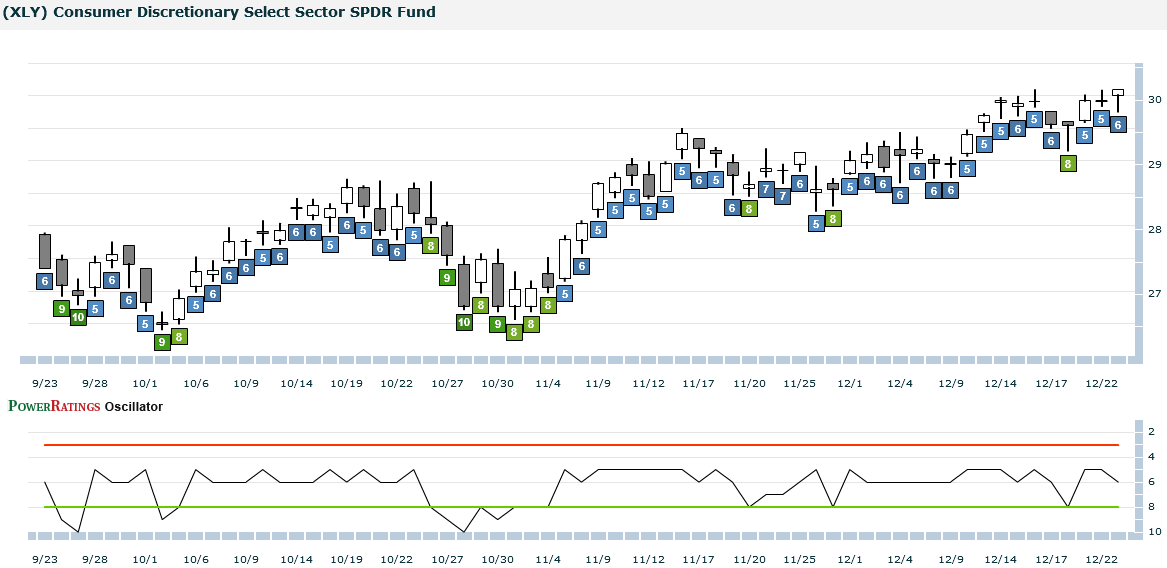Some Approaches to Trading ETFs
Two days ago in ETFs Increasingly Dominate Trading, I mentioned that this blog will devote more attention to ETFs in the coming year. I have also decided that after three years of dancing around the subject, I will also be a little more explicit in talking about different strategic approaches to trading as well as specific strategies.
Yesterday, while I was thinking about where these two new focal points intersect, I noticed a timely piece from CXO Advisory Group with the title of Simple Sector ETF Momentum Strategy Performance. The article, which looks at three different sector SPDR momentum strategies, ultimately concludes that “simple sector ETF momentum strategies have generally outperformed the broad stock market over the past decade for reasonably low trading frictions.” As someone who actively trades sector rotation strategies, I can’t say I was surprised by the results, but I thought the analysis and charts made for excellent reading – and are certainly worth a click through.
Speaking of sector and geography ETFs, I was also recently examining some of the work that TradingMarkets.com has done with ETFs in the context of their ETF PowerRatings. Anyone familiar with the work of Larry Connors will see how some similar themes from previous publications have been adapted to the ETF world. Based on some introductory materials and a review of charts such as the XLY chart below, it appears as if the ratings give the highest marks to ETFs that have shown intermediate-term trend strength, followed by a recent pullback. In other words, the ratings make it easy to get long up trends or short downtrends after a pullback makes for high probability entry signals. Frankly, this is the type of strategic approach that I have had a lot of success with and it appears that the ETF PowerRatings implementation is a similar application to some of my thinking about ETFs.
If the TradingMarkets approach appeals to the investor who is looking for someone else to do all the analysis and generate entry and exit signals, ETF Rewind is at the other end of the spectrum. In ETF Rewind Pro, Jeff Pietsch has built an Excel-based set of data and analytics that is ideal for the ideal for the investor who likes to do their own analysis and roll their own strategies, but needs a platform on which to make it all happen. Earlier this year, in Pairs Trading with ROB, I talked about some of the pairs trading applications that ETF Rewind can be used for. I failed to mention that ETF Rewind also comes with modules that generate both long and short weekly trend trading ideas, daily countertrend trading ideas and day trading candidates as well. Of course, most investors will also want to avail themselves of the almost encyclopedic collection of data for almost 200 ETFs and use the data and tools to develop their own strategies.
I should also note that I have a subscriber service which I rarely discuss here that utilizes a volatility-based ETF trading approach that I call EVALS (ETF Volatility Analysis Long/Short.) EVALS is unusual in that it is a trading approach which draws upon volatility-based indicators to trigger entries and exits. For more information, try VIX and More EVALS or check out the EVALS blog.
For more on related subjects, readers are encouraged to check out:

[graphic: ETF PowerRatings and TradingMarkets.com]
Disclosure: ETF Rewind and the VIX and More Subscriber Newsletter are available as part of a bundle (with Quantifiable Edges) in Blogger Triple Play

